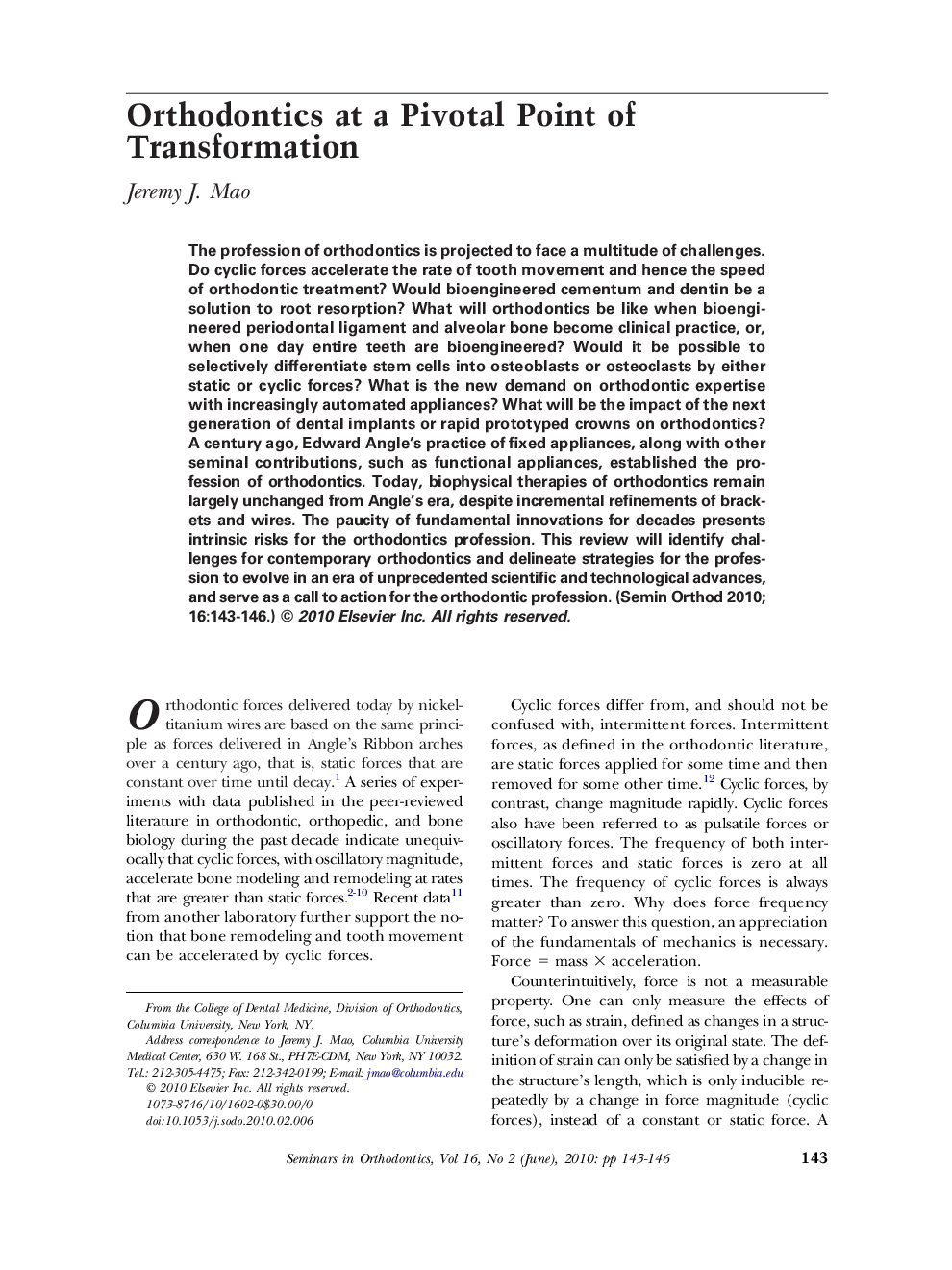| Article ID | Journal | Published Year | Pages | File Type |
|---|---|---|---|---|
| 3175554 | Seminars in Orthodontics | 2010 | 4 Pages |
The profession of orthodontics is projected to face a multitude of challenges. Do cyclic forces accelerate the rate of tooth movement and hence the speed of orthodontic treatment? Would bioengineered cementum and dentin be a solution to root resorption? What will orthodontics be like when bioengineered periodontal ligament and alveolar bone become clinical practice, or, when one day entire teeth are bioengineered? Would it be possible to selectively differentiate stem cells into osteoblasts or osteoclasts by either static or cyclic forces? What is the new demand on orthodontic expertise with increasingly automated appliances? What will be the impact of the next generation of dental implants or rapid prototyped crowns on orthodontics? A century ago, Edward Angle's practice of fixed appliances, along with other seminal contributions, such as functional appliances, established the profession of orthodontics. Today, biophysical therapies of orthodontics remain largely unchanged from Angle's era, despite incremental refinements of brackets and wires. The paucity of fundamental innovations for decades presents intrinsic risks for the orthodontics profession. This review will identify challenges for contemporary orthodontics and delineate strategies for the profession to evolve in an era of unprecedented scientific and technological advances, and serve as a call to action for the orthodontic profession.
